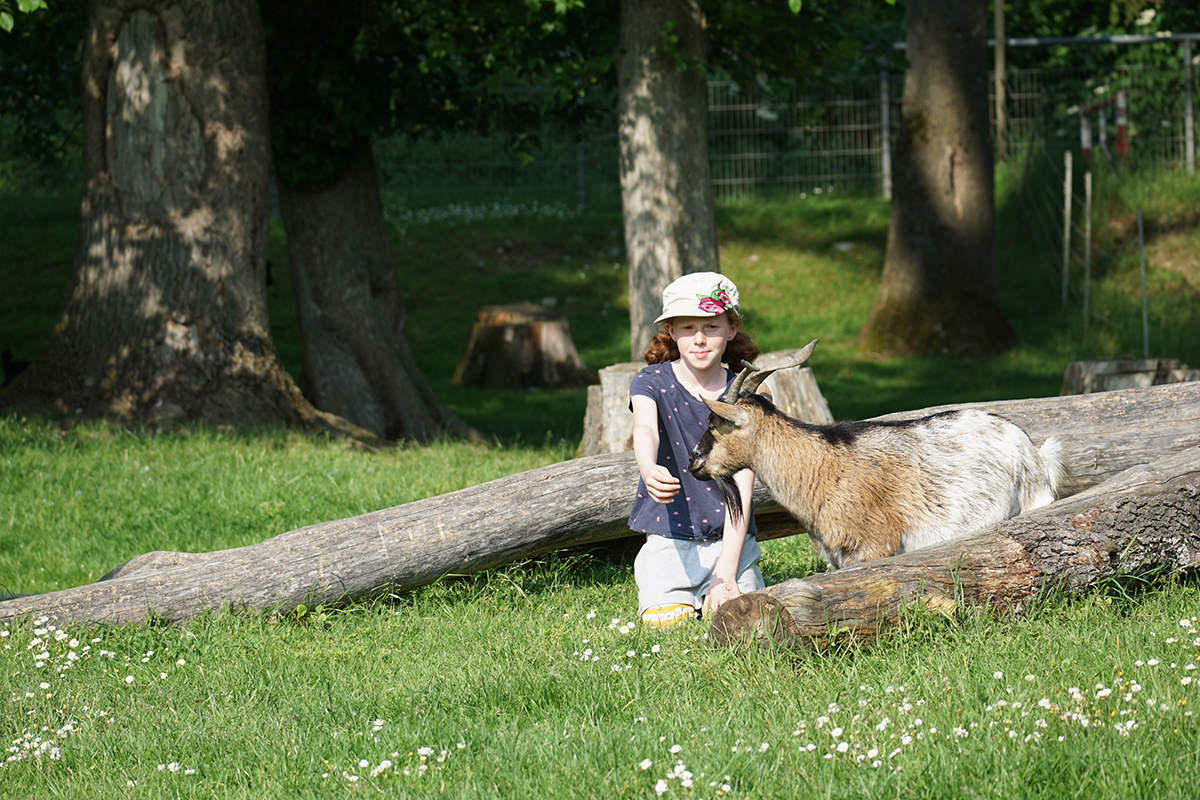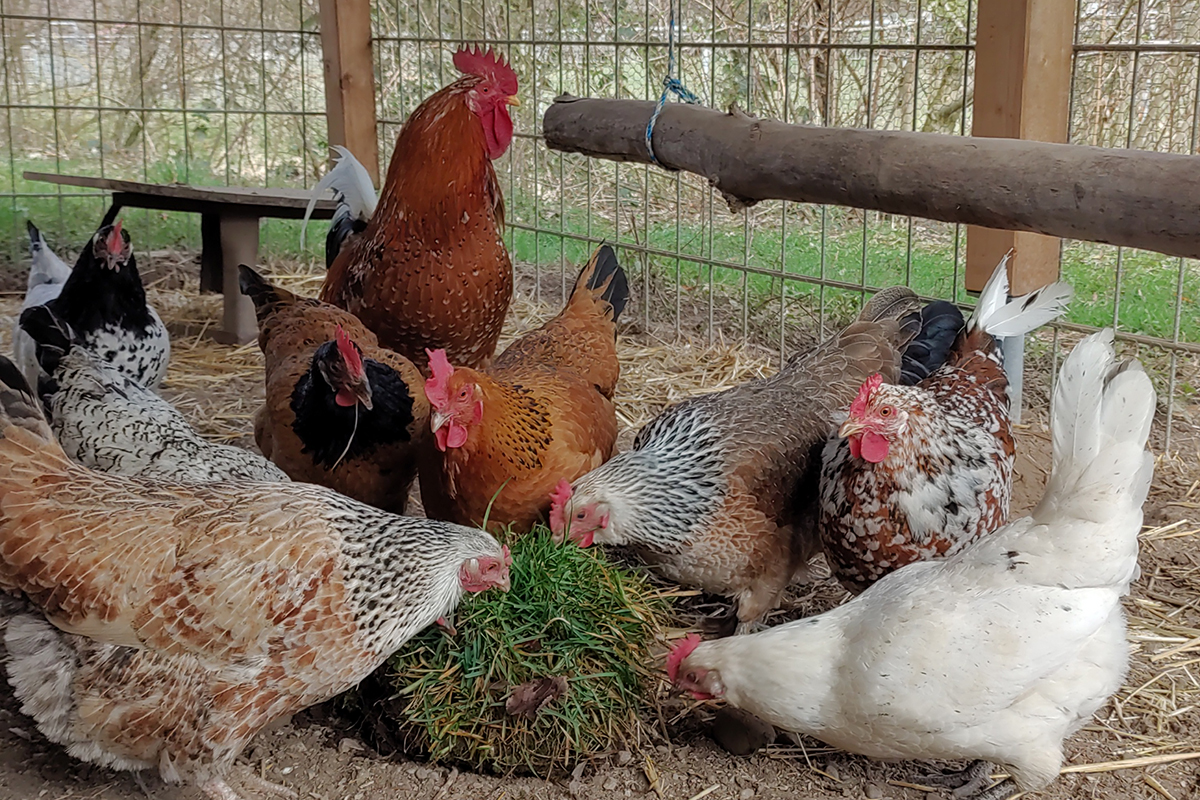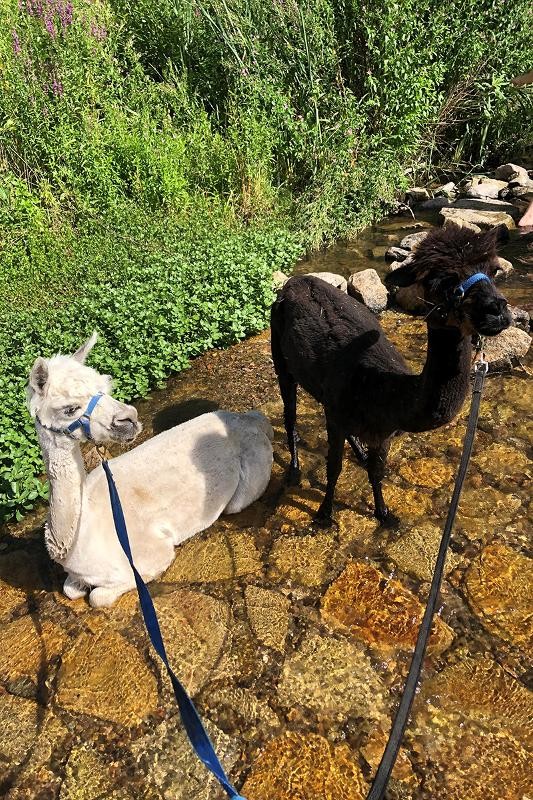Educational activities for school classes and other groups
School classes and other groups can actively experience KonTiKi as an extracurricular site of learning on Wednesday and Thursday mornings. New interconnections will be introduced by means of practical activities and observation. Social competences will be enhanced and awareness of responsible treatment of our environment will be raised in group learning.
Wednesdays and Thursdays from 9 a.m. to noon
Registration and dates by phone at: (0761) 201 6593
Costs: 4 euros for schoolchildren from Freiburg, 5 euros for schoolchildren from outside Freiburg.

From Sheep to Wool
Nowadays we almost never produce clothes ourselves manually. So it is all the more important for children to understand traditional methods of production. Our “From Sheep to Wool” project shows schoolchildren in small groups what their clothes are made of. What is the difference between polyester, cotton and wool? And what is the difference between sheep’s, alpaca’s and camel’s wool?Against this background, the children get to know some of the Mundenhof animals that provide wool, such as the sheep, alpacas, lamas and camels, and also look after some of them independently. In order to clarify the path from animal to clothing, various steps in the traditional method for processing wool are carried out during the project. The schoolchildren pluck the wool by hand or with carding machines. Finally, they produce their own strands of wool. During these work steps the children experience how time-consuming and work-intensive the manual production of a strand of wool, and thus a pullover, really is. They thus learn a new respect for their clothing.
From Corn to Bread
The school class project “From Corn to Bread” involves the schoolchildren in the practical implementation of the traditional processing of grain to bread. The children make their flour by hitting the grain with stones, as is still carried out by many peoples. They thus experience how much physical effort and time is involved in this work and just how much easier life is with a mill. The children bake their own rolls from the freshly ground flour. Whereby they experience for themselves how delicious a healthy wholemeal roll tastes. At the end of the project we visit the Mundenhof’s grain silo, in which the different types of grain are stored as animal feed.

All about Cows
Biodiversity is a hot topic today. There are many breeds of domestic cattle at the Mundenhof. We examine them and discover the differences – from native Hinterwälder cows to Tibetan yaks. Whereby the schoolchildren discover the relationship between physical features and geographical/climatic conditions.
After milking the cows themselves, the schoolchildren become more and more aware of the value of food with every step they undertake during the processing of the milk to butter and cheese.
What’s hatching out here, then?
There are all sorts of bird species that the children can observe at close quarters at the Mundenhof. At the appropriate time of year, it is possible to watch the birds whilst they are brooding and rearing their young. The children learn the structure of the egg and the development from egg to chick. We then visit the henhouse and explain the difference between cage, barn and free-range husbandry. In this way, the children learn about the effects of husbandry on the animals and, when they buy eggs, they can tell how the animals were looked after.
Life in a Stream
One finds water at many places in the Mundenhof. For once, we want to turn our attention away from the large animals and investigate the fascinating habitat on the surface, and hidden below the surface, of the water. We examine the stream using nets, magnifying lenses and beakers. A dirty broth or drinking water? The small animals will show us!

Sweet Honey – Hard-Working Bees
People have been using bees to supply honey and wax for hundreds of years. But how and why do bees produce these things? Where do bees live? How does such a bee colony live together? We follow the bees in their beehive – well protected of course.
